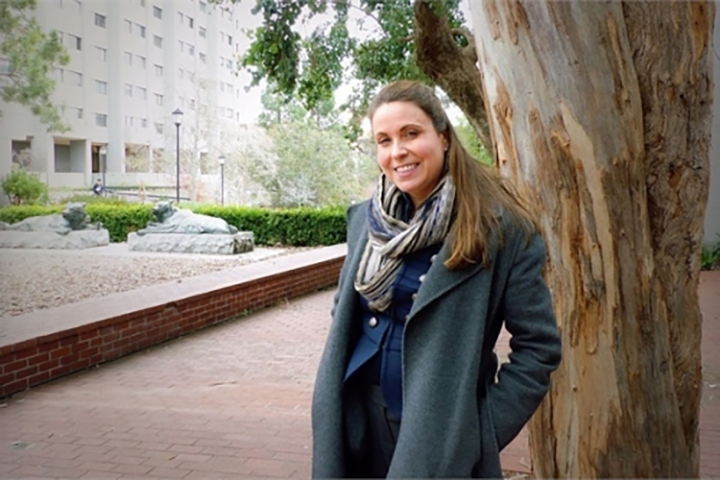
ALKIS TOUTZIARIDIS – MARCH 21
I recently spoke with Professor Susan Shaheen from UC Berkeley, a prominent expert in sustainable mobility. She co-directs the Transportation Sustainability Research Center and has been a pioneer in researching the intersection of automated vehicles with shared mobility. Professor Shaheen’s work, which includes significant contributions to understanding the social and environmental impacts of transportation technologies, has earned her numerous accolades, including the Roy W. Crum award from the Transportation Research Board and recognition as one of the top academic thought leaders in transportation by the Eno Transportation Foundation.
Alkis Toutziaridis: In the context of shared automated vehicles, how far have we come in integrating this technology into our current transportation systems, and what is its current state now?
Prof. Shaheen: What’s really exciting is the real-world deployment of shared automated vehicles in numerous cities. This transition from controlled environments to commercial applications is a notable development. Reflecting on my experiences during my PhD, where I encountered these vehicles in a more controlled setting in Japan, the change is remarkable. Today, these vehicles are not only available for the public but also accessible through a simple phone app, moving beyond controlled testing to being a part of our everyday lives.
Alkis Toutziaridis: We’re now seeing commercially available services with driverless, fully automated vehicles. Could you comment on the legal progress in this area? I recall reading about various legal challenges and bottlenecks that needed to be addressed for these services to exist commercially.
Prof. Shaheen: Yes, moving into the commercial phase is a significant shift. Initially, there was a focus on simulations and sensor-equipped cars in test environments. I was involved in similar work during my postdoc 20 years ago. Today, we’re not just in the real world, but in a commercial setting. It’s messy to deploy advanced technologies in real-world scenarios, dealing with built environments, traffic laws, and the unpredictability of human behavior. Unfortunately, this could lead to issues like vehicles obstructing emergency services and causing injuries, which raises serious questions in a real-world context. It’s certainly complicated to assess the impact of these technologies on collisions and fatalities.
Alkis Toutziaridis: It seems difficult to determine whether these technologies prevent more accidents than they cause. What’s your view on the decision-making of automated vehicles compared to humans?
Prof. Shaheen: It is indeed challenging. These vehicles are programmed to learn over time, and currently, they behave somewhat like cautious teenagers. They tend to be overly cautious, contrary to some expectations. Comparing automated vehicles’ reaction times and decisions to human drivers requires a lot of data and is a complex issue.
Alkis Toutziaridis: Given the risks involved, what do you see as the environmental and social benefits of integrating shared automated vehicles, especially in conjunction with ride-sharing technologies?
Prof. Shaheen: The potential benefits, especially in an ideal scenario where everyone is willing to share rides efficiently, are significant. However, the willingness to pool or share rides has decreased, particularly post-COVID. We’re also facing societal questions about people’s readiness to share rides with strangers in a driverless car. We’re learning about these issues in real-world settings, which is a different scenario from what we had five years ago. Introducing advanced technology into society is always a gradual process.
Alkis Toutziaridis: This change in transportation seems to be one of the most significant we’ve seen. How do you think this will affect labor and city design?
Prof. Shaheen: It’s a major change. The labor implications and the need to rethink city design are critical. We need to consider where these vehicles will park or charge, particularly if they’re electric, and how to redesign streets for them. While there are potential social and environmental benefits, the situation has many parameters. There’s also much discussion about social equity, such as improving mobility for people with disabilities and ensuring these vehicles don’t perpetuate human biases.
Alkis Toutziaridis: So, the data that trains these automated vehicles is inherently human and might contain human biases, especially the ones sourced online.
Prof. Shaheen: Yes, there is potential to program these vehicles to operate in diverse neighborhoods and locations without picking up on biases. But these are issues society needs to be conscious of. I think these topics are part of open conversations today, and the media plays a big role in helping people think through the implications. That’s why I value these interviews; they help share insights on the potential opportunities and challenges in this space. Other important aspects like liability, risk, and insurance are also complicated. If there’s an accident, determining who’s liable or who pays for it is a major concern.
Alkis Toutziaridis: Yes, these are crucial questions, especially regarding cost and equitable access, ensuring high-end technology is accessible and beneficial to all.
Prof. Shaheen: Exactly. These questions are key to real-world deployment. We’re entering a phase where people experience this as a commercial product, and these issues become more pronounced.
Alkis Toutziaridis: So, these questions arise with the real-world application of the technology?
Prof. Shaheen: They do arise beforehand, during planning stages, but when the vehicles hit the roads, these issues become concrete realities. For example, cases where automated vehicles impede emergency services. It moves from theoretical to practical, and solutions must be found quickly. Cruise, for instance, has pulled all its vehicles from operating cities due to mounting concerns about their impact on society and traffic.
Alkis Toutziaridis: So we’re in a trial-and-error phase, iterating to improve and eventually reach a stage where this technology is widely available and commercially viable?
Prof. Shaheen: Potentially, though it may not work in all environments, like in snow and ice or on poorly maintained roads. I’m running short on time now, but do you have any final question?
Alkis Toutziaridis: No, this was pretty much my last question. I wanted to understand the current phase and the future trajectory of automated vehicles.
Prof. Shaheen: The future, as you’ve read, is often depicted as utopian, where car ownership isn’t necessary. But achieving this reality is unclear. It will likely evolve incrementally, adapting to existing urban landscapes. It might work in some places and not in others. What’s crucial is understanding how different the current landscape is compared to a few years ago. The ability to call and pay for a driverless car service is a recent development.
Alkis Toutziaridis: Thank you for your time and insights. It’s been enlightening to learn about both the current state and the potential future of automated vehicles.
Prof. Shaheen: You’re welcome, and thank you for your interest in this work. If you want me to review your story, feel free to send it my way.
Alkis Toutziaridis: Absolutely, thank you. Have a great day.
Prof. Shaheen: You too. Bye.
Featured Image Source: Berkeley Civil & Environmental Engineering
Disclaimer: The views published in this journal are those of the individual authors or speakers and do not necessarily reflect the position or policy of Berkeley Economic Review staff, the Undergraduate Economics Association, the UC Berkeley Economics Department and faculty, or the University of California, Berkeley in general.



